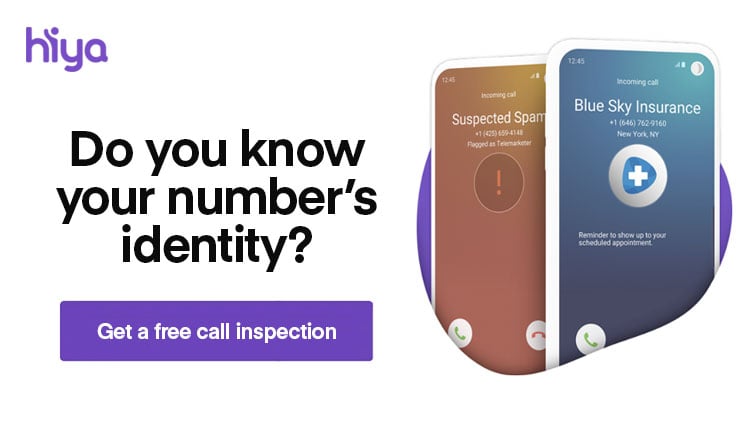For every problem or pain point a business has, it seems like there are companies out there offering services to solve that problem. That’s true as well for businesses who make high volumes of outbound calls.
Are your calls being labeled as spam? Simply hire a company to fix it.
Today, in the next installment of our call reputation blog series, we take a look at services that charge a fee to “fix” your reputation.
To read other blog posts examining call reputation, see the bottom of this page.
What are call reputation services?
Call reputation services offer products that they say will help companies “fix” their spam labels and improve their reputation. As carriers have become better at identifying spam calls, a whole new cottage industry has sprung up to help outbound callers get around spam labels. Some of the services these reputation companies offer include:
- Number monitoring – Watching numbers to see if calls are being labeled as spam.
- Number registration – Registering numbers with carriers in an effort to have spam labels removed.
- Number rotation – Continually rotating through new numbers to avoid spam labels.
Do these call reputation services work?
That’s the big question. The main problem with these services is that they perpetuate the myth that it’s the phone number that’s the problem. In reality, the root of the problem is often bad calling practices. Callers who engage in spam-like behavior are likely to get reported as spam by the call recipient, and that (along with other data points) leads the carrier to label the call as spam.
Download Hiya’s Call Reputation Monitoring Checklist to see 9 ways to prevent calling experiences that can lead to spam labeling.
What’s the advantage of registering my numbers with the phone carriers?
Registering helps carriers verify that you’re a legitimate business. Reputation companies charge for this service, but in fact you can register with the three major U.S. wireless carriers for free using the centralized website Free Caller Registry. This registry submits data to the analytics services of the three major carriers. These analytics services (one of which is Hiya) power the spam detection and flagging of calls.
What happens after I register my numbers on Free Caller Registry?
Each carrier’s analytics service will vet the information and verify legitimate businesses. If an analytics service doesn’t know the caller’s identity, it needs to make the best prediction about who the caller might be and determine whether the caller looks like other spam callers or not.
Registering means that analytics services like Hiya know more about the enterprise and which numbers it owns, so the algorithm can lean less on calling patterns to try to predict who the caller is, and can rely more on recipient reactions to calls.
See our blog post What is Free Caller Registry and what does it do?
Isn’t number rotation a good way to get rid of spam labels?
Number rotation has long been a hallmark of scammers and spammers who use it as a way to hide from spam protection services. When legitimate businesses use the same tactics as scammers and spammers, they’re likely to get caught up in the same net.
Hiya’s data shows that about one-third of scam calls use number rotation as a tactic. Hiya has even observed scam campaigns that use a different phone number for every single call. This lack of history of a phone number is one of the signals that analytics services use to determine if a call is likely to be unwanted.
But we’re a legitimate company. Why are our calls being labeled as spam?
Just because a company is legitimate doesn’t mean it’s incapable of making spam calls. Spam is broadly defined as an unwanted call, and call recipients are able to tell carriers if a call is unwanted through reporting mechanisms or blocking calls. Recipient feedback is one of the primary signals carriers look at in determining whether a call gets a spam label, so it’s good to review your calling practices to see why people might be reporting your calls.
Learn more
To learn more about call reputation, read the other blog posts in this series.
Top 10 reasons your calls are reported as spam
What Hiya Connect can see before the spam label
What is Free Caller Registry and what does it do?
Spam labeling: the role of recipient reactions
Debunking myths: call reputation, spam labels, and branded caller ID
Understanding spam rate: enhancing call performance and debunking myths with Hiya Connect












